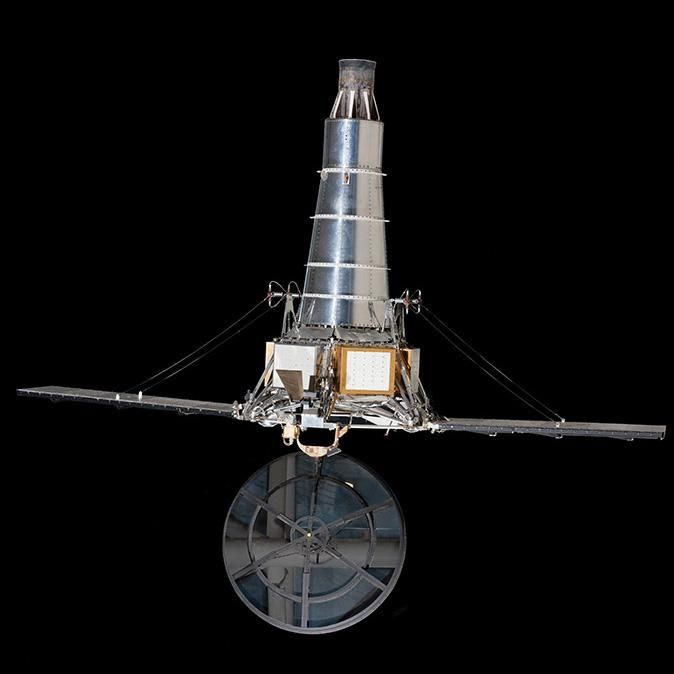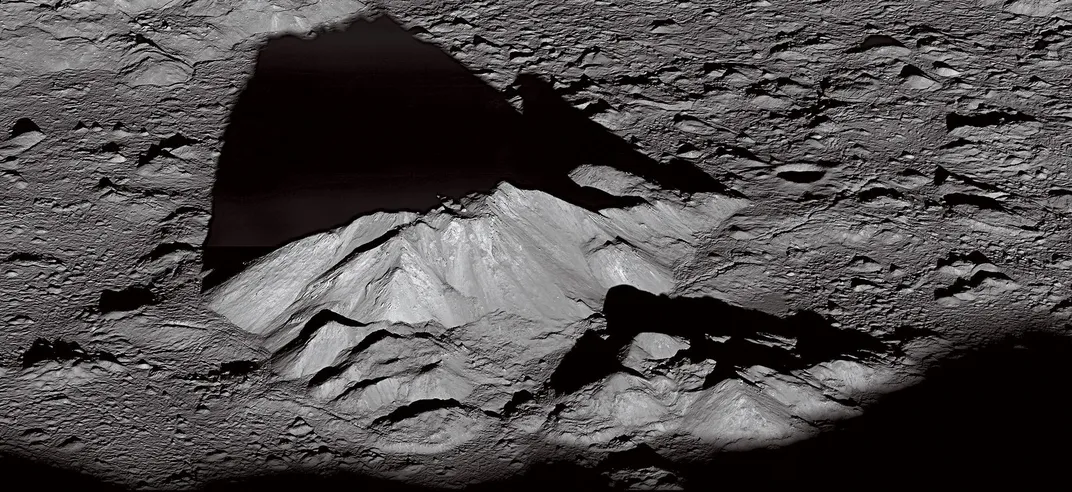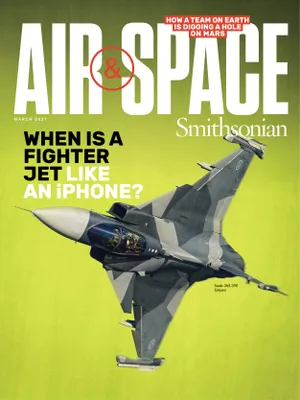The Robots That Paved the Way For Apollo
Then as now, machines preceded the humans.
:focal(4006x1263:4007x1264)/https://tf-cmsv2-smithsonianmag-media.s3.amazonaws.com/filer/b9/cd/b9cdda0f-a46c-4bdb-93e8-a3d87d70f66f/12c_fm2021_surveyora19700294000-nasm2018-10807_live.jpg)
By the time Neil Armstrong and Buzz Aldrin stepped out onto the Sea of Tranquility in July 1969, the moon was well-explored territory. For 10 years, robotic spacecraft from the Soviet Union and United States had been photographing, probing, and mapping it from lunar orbit and from the surface. Tranquility alone had already been scouted twice—by Ranger 8 in 1965 and by the Surveyor 5 lander in 1967.
The Soviets went first. Luna 2, carrying tiny USSR pennants and a few simple science instruments for the voyage there, crashed into the lunar surface in September 1959 (soft landings not yet having been mastered). Luna 3 followed three weeks later with a flyby that yielded—after centuries of wondering—our first pictures of the far side. More Soviet wins followed, including the first soft, or at least survivable, landing (Luna 9, 1966) and first lunar orbiter (Luna 10, 1966).
While the Americans may have been a step behind, their robots were more sophisticated. NASA’s Ranger impact missions were equipped with cameras that snapped ever-closer pictures of the moon and radioed them back to Earth before smashing into the surface, kamikaze-style. The first six Ranger missions failed, but Rangers 7, 8, and 9 returned thousands of photos between July 1964 and March 1965 that were far more detailed than anything seen through telescopes on Earth.

The Ranger missions were followed in 1966 by the first of five Lunar Orbiters, whose job was to map the moon’s surface at high resolution, provide a greater understanding of lunar orbital dynamics, and scout out smooth, flat landing sites for the Apollo astronauts who were already in training.
That same year saw the first landing by a Surveyor spacecraft. By the time that program ended in February 1968, five Surveyors had demonstrated that it was possible to make a controlled lunar landing with a fair degree of accuracy—within a couple miles of their targets. The Surveyors also put to rest a worry (never widespread among NASA engineers) that the Apollo astronauts might sink into deep lunar dust upon landing. In November 1969, Apollo 12’s Pete Conrad and Alan Bean touched down close enough to Surveyor 3, which had been sitting in the Ocean of Storms for more than two years, to walk over and remove parts of the robot for return to Earth.
All these pioneering spacecraft will be represented in the new Destination Moon gallery, along with another, critical one that’s still operating—the Lunar Reconnaissance Orbiter launched by NASA in 2009 to map the surface down to an accuracy of centimeters. LRO is vital to the next generation of lunar explorers, human and robotic, who will use its precise maps and images to navigate down to the surface with much greater confidence than did the first generation of lunar explorers.
Destination Moon is made possible by the generous support of:
Apollo 11 Commemorative Coin Program | Jeff and Mackenzie Bezos | Joe Clark | Charles and Lisa Simonyi Fund for Arts and Sciences | Bruce R. McCaw Family Foundation | Elizabeth H. and James S. McDonnell III Fund (at the St. Louis Community Foundation) and The JSM Charitable Trust | John and Susann Norton | Phillip N. and Mary A. Lyons | Gregory D. and Jennifer Walston Johnson | Barry D. Friedman | Leora and Derek Kaufman | FedEx Corporation | The Beall Family | Milann H. Siegfried | OMEGA | Robert Procop
/https://tf-cmsv2-smithsonianmag-media.s3.amazonaws.com/filer/80/58/805813ae-7b03-4314-9189-d3b2e81aa37b/12i_fm2021_lunarreconaissanceorbiter_live.jpg)

